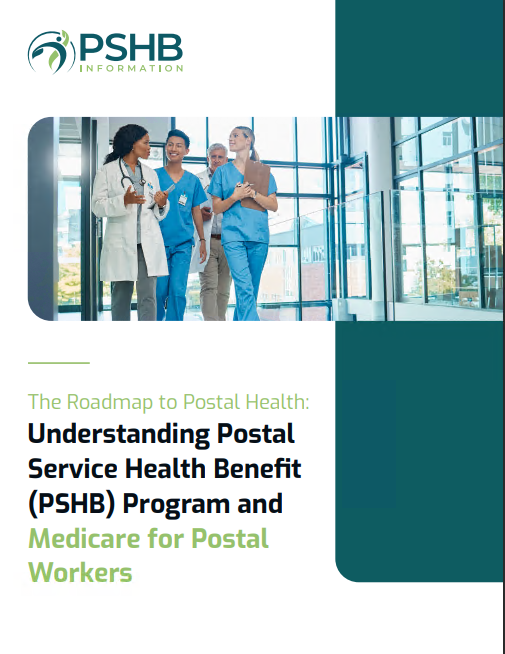Key Takeaways:
- Understanding the Postal Service Health Benefits (PSHB) enrollment process ensures federal employees receive the health coverage they need during retirement.
- Proper timing and document preparation are essential to avoid gaps in health coverage when transitioning to PSHB.
How to Make Sure You’re Covered: A Simple Guide to PSHB Enrollment
When preparing for retirement, ensuring that you have continuous health coverage is crucial. For federal employees, this means enrolling in the Postal Service Health Benefits (PSHB) program. The PSHB is a health insurance program specifically designed for Postal Service employees, providing comprehensive coverage during retirement. To make this transition as smooth as possible, it’s important to understand the steps required to secure your health benefits without interruption. This guide simplifies the enrollment process, ensuring that you can navigate it confidently and without stress.
What Is the Postal Service Health Benefits (PSHB) Program?
The PSHB program is a health insurance plan specifically for Postal Service employees. It is part of the Federal Employees Health Benefits (FEHB) program, which offers health insurance to federal employees and retirees. The PSHB provides comprehensive medical coverage, including hospital care, preventive services, and prescription drugs. This program is particularly important for retirees, as it ensures continued access to healthcare after leaving the workforce.
For many Postal Service employees, the PSHB is a vital part of their retirement planning. It provides peace of mind, knowing that their healthcare needs will be covered without having to search for new insurance options after retirement. The program is designed to be easy to transition into, provided that employees understand the steps and timelines involved in the enrollment process.
When Should You Start the PSHB Enrollment Process?
Timing is critical when it comes to enrolling in the PSHB program. The best time to begin the enrollment process is during your final year of employment. This allows ample time to complete all necessary paperwork and ensures that there is no gap in coverage when you retire.
It is essential to mark key dates on your calendar, such as when you are eligible to enroll and any deadlines that apply. Missing these deadlines can result in a delay in coverage, leaving you without health insurance during a crucial time. The open season, typically held in the fall, is the period when you can make changes to your health benefits, including enrolling in the PSHB.
For those who are approaching retirement, it is advisable to start reviewing your health insurance options at least six months before your planned retirement date. This gives you enough time to compare plans, understand the benefits offered, and gather any required documentation.
What Documents Are Needed for PSHB Enrollment?
Enrolling in the PSHB program requires several important documents. These include your retirement paperwork, proof of your employment with the Postal Service, and any other documents that verify your eligibility for the program. You will also need to provide personal identification, such as a government-issued ID or passport, and your Social Security number.
One of the most critical documents is your retirement package, which contains information about your eligibility for benefits, including the PSHB. This package should be reviewed carefully to ensure that all information is accurate and up to date. Any discrepancies or missing information can delay your enrollment.
Additionally, if you are currently enrolled in another health insurance plan, you may need to provide documentation that verifies your coverage status. This helps avoid any lapses in coverage when you transition to the PSHB.
How to Choose the Right PSHB Plan
Choosing the right PSHB plan involves considering your health needs, budget, and the benefits offered by each plan. The PSHB offers a range of plan options, each with different levels of coverage and costs. When selecting a plan, it’s important to consider factors such as:
- Coverage Needs: Evaluate your current health status and any ongoing medical conditions. This will help determine which plan provides the best coverage for your specific needs.
- Costs: While you should not focus on specific prices, it’s important to understand the overall cost structure, including premiums, co-pays, and out-of-pocket expenses. This will help you choose a plan that fits your financial situation without discussing exact numbers.
- Provider Network: Ensure that your preferred healthcare providers are included in the plan’s network. This will save you from unexpected costs associated with out-of-network care.
- Prescription Drug Coverage: If you require regular medications, verify that your prescriptions are covered under the plan’s formulary.
It’s helpful to consult with a licensed insurance agent who can provide detailed information about the available plans and help you make an informed decision based on your individual needs.
How Does PSHB Enrollment Affect Your Family?
When you enroll in the PSHB program, your family members may also be eligible for coverage. This includes your spouse and dependent children. Ensuring that your entire family is covered is an important aspect of the enrollment process. You will need to provide documentation that verifies your dependents’ eligibility, such as birth certificates, marriage certificates, or adoption papers.
Family coverage options vary depending on the plan you choose. Some plans offer broader coverage for family members, while others may be more focused on individual coverage. Understanding the benefits for dependents under each plan is crucial to making the right choice for your family.
If you are covering a spouse or dependent children, be sure to review the specific terms and conditions of the family coverage. This includes understanding any additional costs and how these might impact your overall budget. Properly planning for these expenses will help ensure that your family’s health needs are met without financial strain.
Steps to Ensure a Smooth Transition to PSHB
Transitioning to the PSHB program requires careful planning and attention to detail. Here are some steps to help ensure a smooth transition:
-
Review Your Current Health Insurance: Before you retire, review your current health insurance coverage to understand what will change when you transition to the PSHB. This includes checking if your current healthcare providers are in the PSHB network.
-
Attend a Pre-Retirement Seminar: The Postal Service often offers pre-retirement seminars that provide valuable information about benefits, including the PSHB. Attending one of these seminars can give you a clearer understanding of what to expect during the enrollment process.
-
Consult with a Licensed Insurance Agent: Licensed insurance agents can provide personalized advice based on your unique situation. They can help you understand the nuances of different plans and guide you through the enrollment process.
-
Prepare Your Documentation Early: As mentioned earlier, having all required documents ready well in advance of your retirement date will help avoid delays. Double-check that all information is accurate and up-to-date.
-
Enroll During Open Season: If possible, enroll in the PSHB during the open season to take advantage of the full range of options available to you. This is the optimal time to make changes to your health benefits and ensure continuous coverage.
-
Keep Track of Deadlines: Missing important deadlines can lead to lapses in coverage. Mark your calendar with all relevant dates and set reminders to ensure you complete each step of the process on time.
-
Follow Up After Enrollment: After you have completed your enrollment, follow up with the PSHB to confirm that everything is in order. This will give you peace of mind knowing that your coverage is secure as you transition into retirement.
What to Do If You Miss the Enrollment Deadline
Missing the PSHB enrollment deadline can have serious consequences, including a gap in your health coverage. If you miss the deadline, it’s important to take immediate action. Contact a licensed insurance agent or the PSHB customer service center as soon as possible to discuss your options.
In some cases, you may be able to enroll outside of the open season due to a qualifying life event, such as a change in marital status or loss of other health coverage. However, these exceptions are limited, so it’s best to enroll on time to avoid complications.
If you do find yourself without coverage due to a missed deadline, explore temporary health insurance options that can bridge the gap until you are able to enroll in the PSHB. This will ensure that you and your family remain protected during this period.
Securing Your Health Coverage for Retirement
Ensuring that you have the right health coverage in place as you approach retirement is one of the most important steps you can take for your long-term well-being. The PSHB program provides comprehensive coverage that can meet the needs of Postal Service employees and their families during retirement. By understanding the enrollment process, preparing the necessary documentation, and choosing the right plan, you can transition smoothly into this next chapter of life with the confidence that your health needs are covered.
Taking proactive steps early on will help you avoid the stress and uncertainty that can come with changes in health coverage. Make sure to stay informed about the deadlines, consult with licensed professionals when needed, and keep your family’s needs in mind as you make decisions about your health benefits.
Contact Information:
Email: [email protected]
Phone: 3615551234






